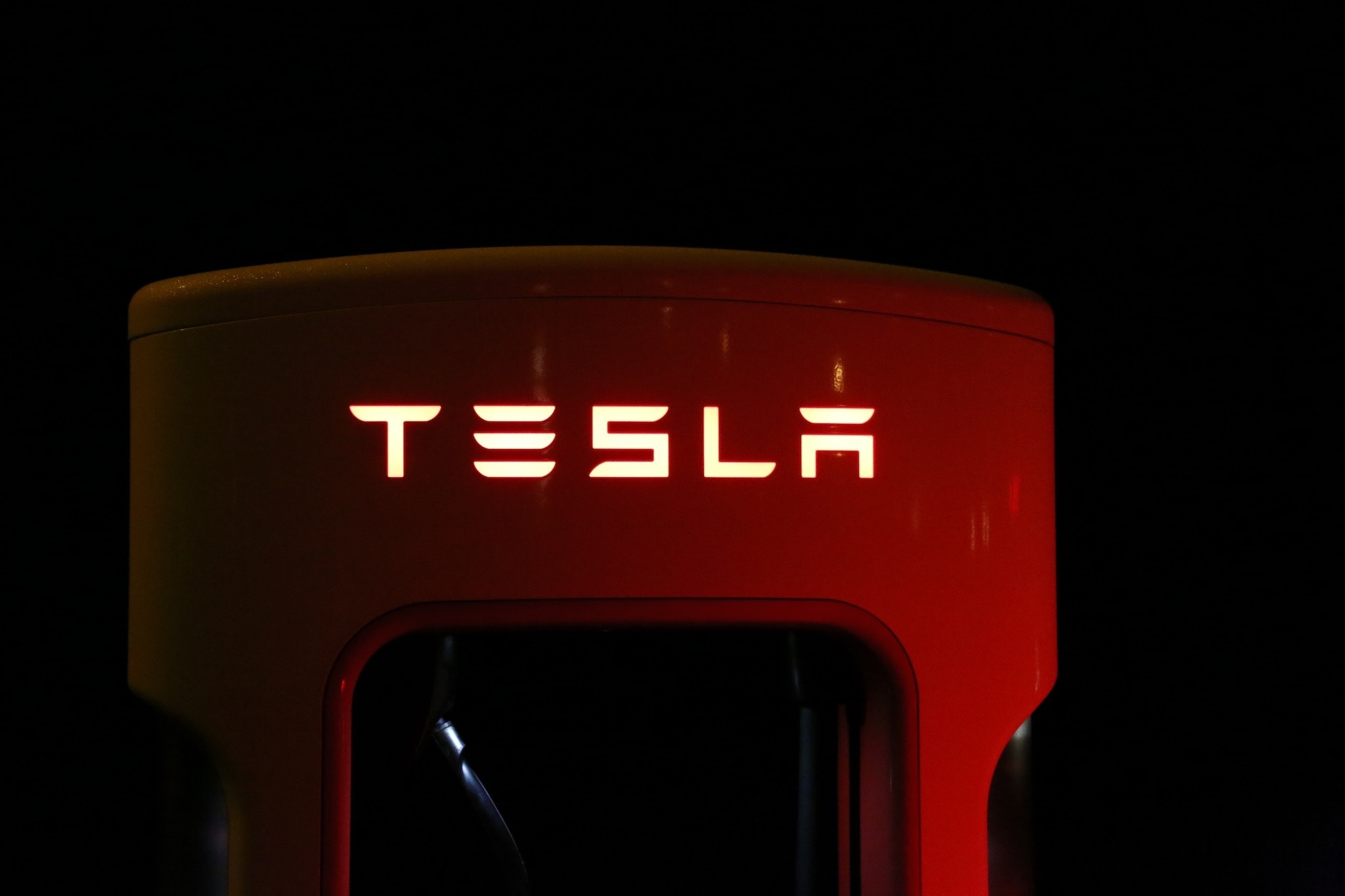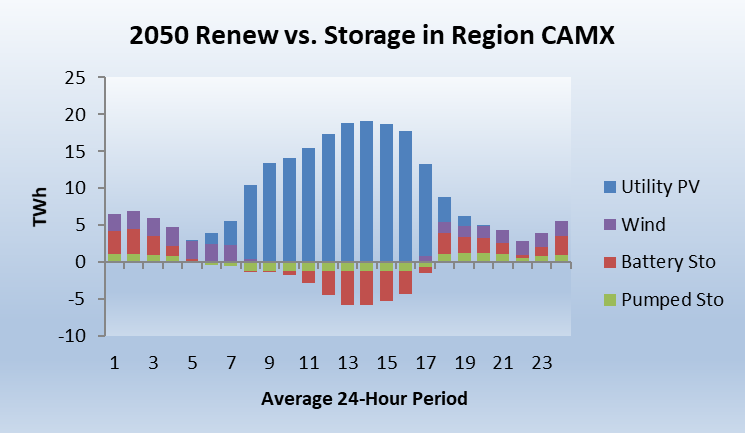
Opportunities and Challenges Presented by High Deployment of Renewables on the Grid
OnLocation presents a series of blogs that identifies the top environmental and energy policy challenges for 2020 and beyond. The second blog in the series (#2 of 3), presented here, focuses on policies aimed at expanding the grid electricity storage market as a way to address electric capacity dispatch challenges created by the recent explosion of new variable renewable generation. Electricity storage is one key technology that is helping address these challenges.
Arguably the biggest overarching challenge today is to mitigate the greenhouse gases contributing to climate change. One of the most popular approaches for mitigating greenhouse gases has been the adoption of variable renewable energy (VRE), both by utilities (wind and solar generation) and by homeowners (rooftop photovoltaic panels). However, what happens when the wind isn’t blowing and the sun isn’t shining, or when the solar generation in the middle of the day exceeds demand? The most promising solution for “filling in the gaps” in generation in shoulder hours and reducing curtailed generation in the mid-day hours is electricity storage.
This series of blogs provides policymakers, especially state energy offices and non-governmental organizations, with a clear vision of the benefits of each approach, how different policy options can enable them, and considerations to make when choosing a path forward. Finally, we recommend integrated energy modeling for analyzing the various policy options.
Benefits of electricity storage

Figure 1. Illustrative Example of the “Duck Curve”
Recent and projected future sources of electricity generation are expected to be increasingly non-dispatchable renewables (or VREs), especially solar photovoltaics (PV). Large quantities of VREs on the system can lead to displacement of other generating sources and even curtailment of renewable generation, particularly during daytime hours and in months when electricity demand is relatively low. In addition, most thermal powerplants lack the capability to quickly ramp down generation when the sun rises and ramp up when the sun sets because of thermal cycling limitations. This potential impact on the grid has been dubbed the “duck curve” by the California Independent System Operator (ISO).[1]
A representative 24-hour load profile shown in Figure 1 was created using results of the U.S. Energy Information Administration’s National Energy Modeling System (EIA NEMS) REStore model.[2] This profile illustrates some of the challenges of dispatching electricity sources in regions with large deployment of PV’s on the grid. Electricity storage capacity can be used to store excess generation in the mid-day hours that may have been curtailed, then the stored electricity is discharged during hours when solar and thermal generation is limited as in the shoulder hours. In this way, the “duck curve” would be flattened.
In addition to the capability of electricity storage to perform “energy time-shifting” as described above, other benefits can include the deferral of utility investments in traditional peaking technologies and in expensive new transmission infrastructure. Storage technologies can also provide grid ancillary services such as voltage support and spinning reserves if a power plant or transmission line is suddenly not available due to a weather event or other major disruption.
The current state of the grid storage market
Technology costs for grid storage, especially lithium-ion batteries, have declined dramatically in recent years, almost 50% reduction in just the last three years according to Bloomberg New Energy Finance.[3] This decline is due in part to synergies with battery manufacturing and research for electric vehicles and electronics, and more cost reductions are expected.
Pumped storage hydroelectric capacity makes up 96% of worldwide energy storage capacity operating today. Of the remaining 4% of storage capacity worldwide, the largest technology shares are molten salt storage paired with solar thermal power plants and lithium-ion batteries. Redox flow batteries and compressed air storage technologies have recently gained market share, and many other storage technologies will improve. Each of these technologies have different attributes that make them more suitable for one type of service over another.
So what policy options are available for expanding the use of electricity storage?
Policies that promote grid electricity storage development
Technology advances alone are not always enough to jump-start adoption of a technology. Smart policy design enables and encourages deployment, especially at the level needed to support large amounts of renewable generation and curb climate change.
Federal Government Research & Development. Many governments, including the United States, are actively funding programs to advance new technologies, improve grid integration, and create partnerships to fund demonstration projects.
State Mandates and Targets. Grid storage installations, especially lithium-ion batteries, are growing rapidly in states that have storage goals, mandates, and incentives. Renewable portfolio standards and state integrated resource plans also promote investment in storage.
Regulatory changes. A Federal appeals court recently upheld the Federal Energy Regulatory Commission’s Order 841, allowing transmission grid operators to open their markets to energy storage resources (ESRs).[4]
Clean Peak Policies. Massachusetts recently adopted a law that is designed to shift clean power from off-peak hours of the day into peak hours to displace fossil generation. However, researchers believe that the policy may not reduce emissions as promised due to design flaws.[5]
Advocacy Groups. Environmental groups and other non-government organizations (NGOs) such as ClearPath and Clean Energy Group are pushing for more government funding and policies to support the expanded use of grid electricity storage.
Synergy with Electric Vehicles. Policies that promote electric vehicles (EVs), as discussed in a recent OnLocation blog on the topic, will indirectly benefit grid electricity storage by improving lithium-ion battery costs and performance.
Considerations to make when choosing a path forward
- Storage technology cost and performance. Costs will continue to decline, and performance will improve, for lithium-ion batteries and for many other promising storage technologies.
- Renewable energy. Grid electricity storage can play an important role in markets with large amounts of renewable energy, especially VREs, in order to increase availability of those resources when the wind isn’t blowing or the sun isn’t shining.
- Long-term storage. Pumped storage hydropower has provided long-term storage capability for decades, but siting new facilities is unlikely. Promising technologies such as liquid air energy storage and some flow battery technologies may be able to fill this need.
- Storage location. The benefits of storage can vary based on its location. Placing storage systems in strategic locations along congested transmission lines, and on-site storage for customers can provide additional benefits beyond time-shifting.
- Complementary policies. The environmental benefits of electricity storage are highly dependent on the mix of fuels and technologies operating on the grid. Storage initiatives should be coupled with policies that promote carbon-free sources of electricity.
- Safety Concerns. The liquid electrolyte commonly used in lithium-ion batteries is highly flammable, but recent advances such as using solid-state electrolytes can improve safety.
- Access to Critical Components. An important component of lithium-ion batteries is cobalt, most of which is mined in the politically unstable country of Congo. Tesla has recently switched to using a cobalt-free type of lithium battery technology for production of their Model 3 electric car in China.[6]
How to analyze various policy options – integrated energy modeling
As government and non-governmental decision-makers attempt to make sense of the policy options discussed here, they typically turn to a form of quantitative computer modeling that focuses on only a single energy sector such as the power sector. It’s very often the case that the full effects of an energy policy won’t be evident without a system-wide approach. That is why we recommend using integrated modeling.
Want to learn more?
Download a copy of our free white paper “Top Environmental and Energy Policy Challenges for 2020” for more in-depth discussion of the policy challenges facing our world today, including the electricity storage policies discussed here. Our third and final blog in the series explores the policy opportunities and challenges of carbon capture technologies.
Check out our blog “What’s in Store with the Battery Revolution” for more discussion of the benefits and challenges of electricity storage.
Download our free whitepaper “Integrated Energy Modeling & Analysis” to learn more about how integrated modeling can be used to inform policymakers.
[1] For more information, visit https://onlocationinc.com/news/2016/05/nems-and-the-duck-issue/
[2] For more information about the EIA NEMS REStore model, see EIA “Assumptions to the Annual Energy Outlook 2020: Electricity Market Module,” https://www.eia.gov/outlooks/aeo/assumptions/pdf/electricity.pdf.
[3] Bandy, Matthew. 2020. “Battery Prices Fall Nearly 50% in 3 Years, Spurring More Electrification: BNEF.” Utility Dive. 2020. https://www.utilitydive.com/news/battery-prices-fall-nearly-50-in-3-years-spurring-more-electrification-b/568363/.
[4] John, Jeff St. 2020. “‘Enormous Step’ for Energy Storage as Court Upholds FERC Order 841, Opening Wholesale Markets.” Greentech Media. 2020. https://www.greentechmedia.com/articles/read/court-upholds-ferc-order-841-opening-wholesale-markets-to-energy-storage.
[5] Spector, Julian. 2020. “How Clean Is Massachusetts’ Clean Peak Rule? Not So Much, New Study Says.” GreenTechMedia.com. https://www.greentechmedia.com/articles/read/how-clean-is-massachusetts-clean-peak-rule.
[6] Sanderson, Henry. 2020. “Tesla’s Choice of Cheaper Lithium Batteries Hits Cobalt Miners | Financial Times.” 2020. https://www.ft.com/content/7264bdda-5310-11ea-90ad-25e377c0ee1f.

